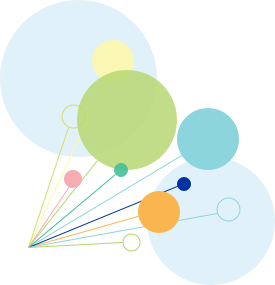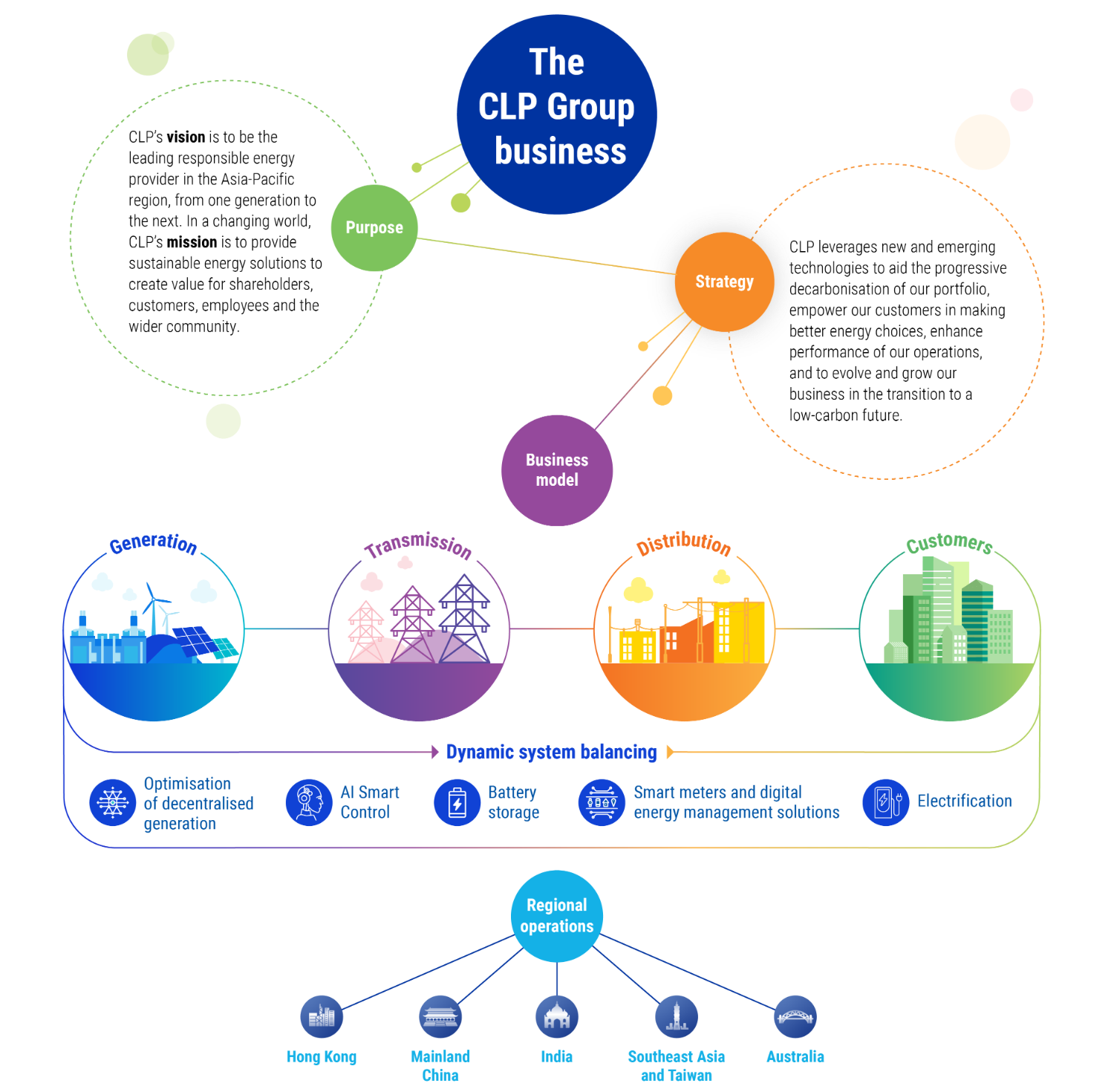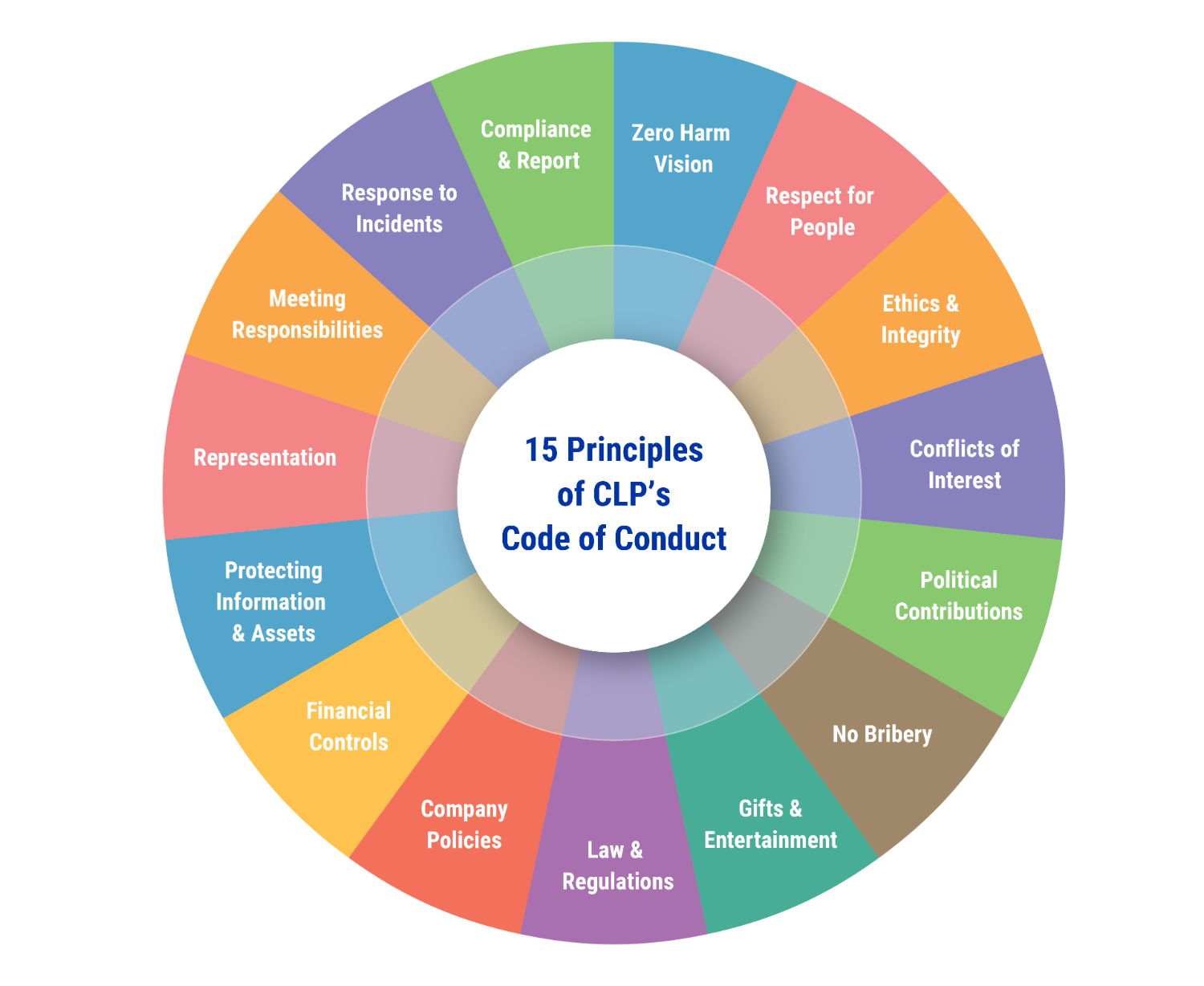Purpose
Copy linkCopied link
The history of CLP mirrors the economic development of Hong Kong and the growth of the Asia-Pacific region. CLP cares not only about shareholders, but also about the communities where it operates.
As an operator and investor in the energy sector in the Asia-Pacific for over a century, CLP has been at the forefront of major transformations in the industry and how it serves the markets of the region. CLP was incorporated in 1901 in Hong Kong where, to this day, it remains headquartered and serves its home market. As the Company enters 2021 – the 120th anniversary year for CLP – it is transforming into a Utility of the Future, with presence in major markets in the region, and participating in the traditional electric utility value chain as well as new energy services.
Although the circumstances and CLP’s role in each of its markets differ, the Group has an unwavering commitment to its communities. In building a Utility of the Future:
“CLP’s vision is to be the leading responsible energy provider in the Asia-Pacific region, from one generation to the next. In a changing world, CLP’s mission is to provide sustainable energy solutions to create value for shareholders, customers, employees and the wider community.”
In delivering services, the CLP Value Framework guides the Company's behaviour:
“Our values guide us in fulfilling our mission and turning CLP’s vision into reality. Our commitments are the promises that we make to our stakeholders about the way in which we will uphold our values."
CLP’s Value Framework
CLP's Value Framework is a set of business principles and ethics that defines the Group's values, as well as its vision, mission, values, identity and action.
In December 2020, CLP’s Value Framework was updated to fully integrate the Sustainability Principles into its values and commitments and to underscore the integral role of sustainability in CLP’s long-term development.
Download CLP's Value Framework Code of Conduct
CLP's Code of Conduct provides the guiding principles for all Company employees to do what is right, behave with integrity and honesty, treat people fairly, respect diversity, obey all laws, accept accountability, communicate openly, and always behave in a way that is beyond reproach.
The Code was updated in May 2020 to ensure that it reflects global best practices and meets the expectations of all stakeholders.
Download CLP's Code of Condcut Having access to electricity is fundamental to human development. According to the UN Economic and Social Council’s 2020 Report on Progress towards the Sustainable Development Goals, 90% of the global population already has access to electricity, whereas in South-East Asia, the access rate has reached 98%. With universal access almost achieved across CLP’s markets, stakeholders expect more than simply the delivery of safe and reliable energy services. Concern has shifted to the electric utility sector's impact on climate change and the role the sector can play in transitioning to a low-carbon economy.
Bearing in mind different stakeholder interests, CLP emphasises value creation over the long term, and to do this in a way that helps serve the communities in which it operates. The value created by the Group is shared amongst different stakeholders in society. In 2020, 84.5% of the economic value generated was distributed to stakeholders, including employees, suppliers and contractors, lenders, shareholders, governments and the community at large. As shown in the chart below, and after excluding the impairment of retail goodwill in Australia of HK$6,381 million in 2019, this economic value distributed from the Group’s businesses has been relatively stable in the last three years.
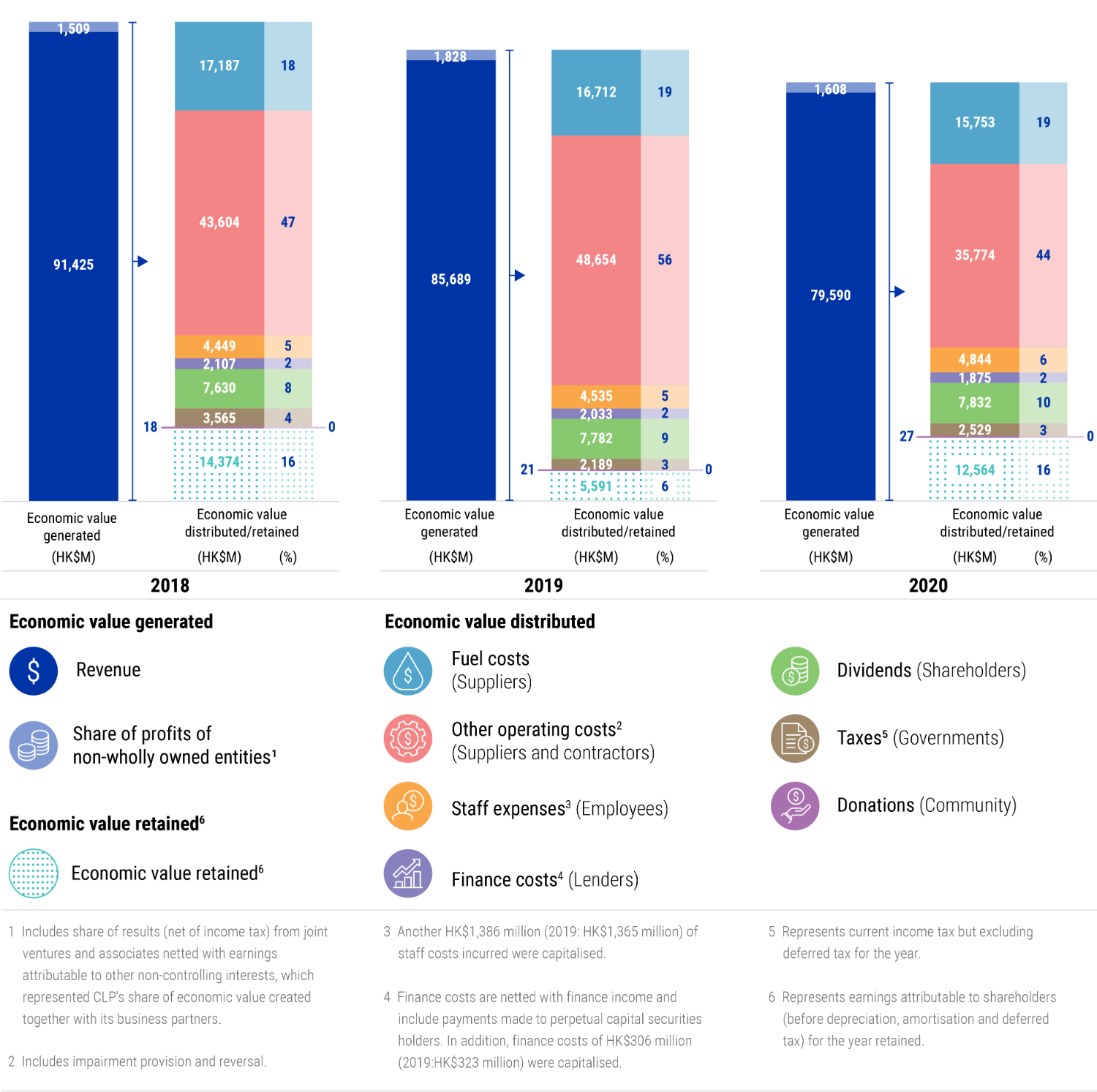
Strategy
Copy linkCopied link
Decarbonisation and digitalisation are at the core of CLP’s business strategy, and sustainability is fully integrated into this strategy.
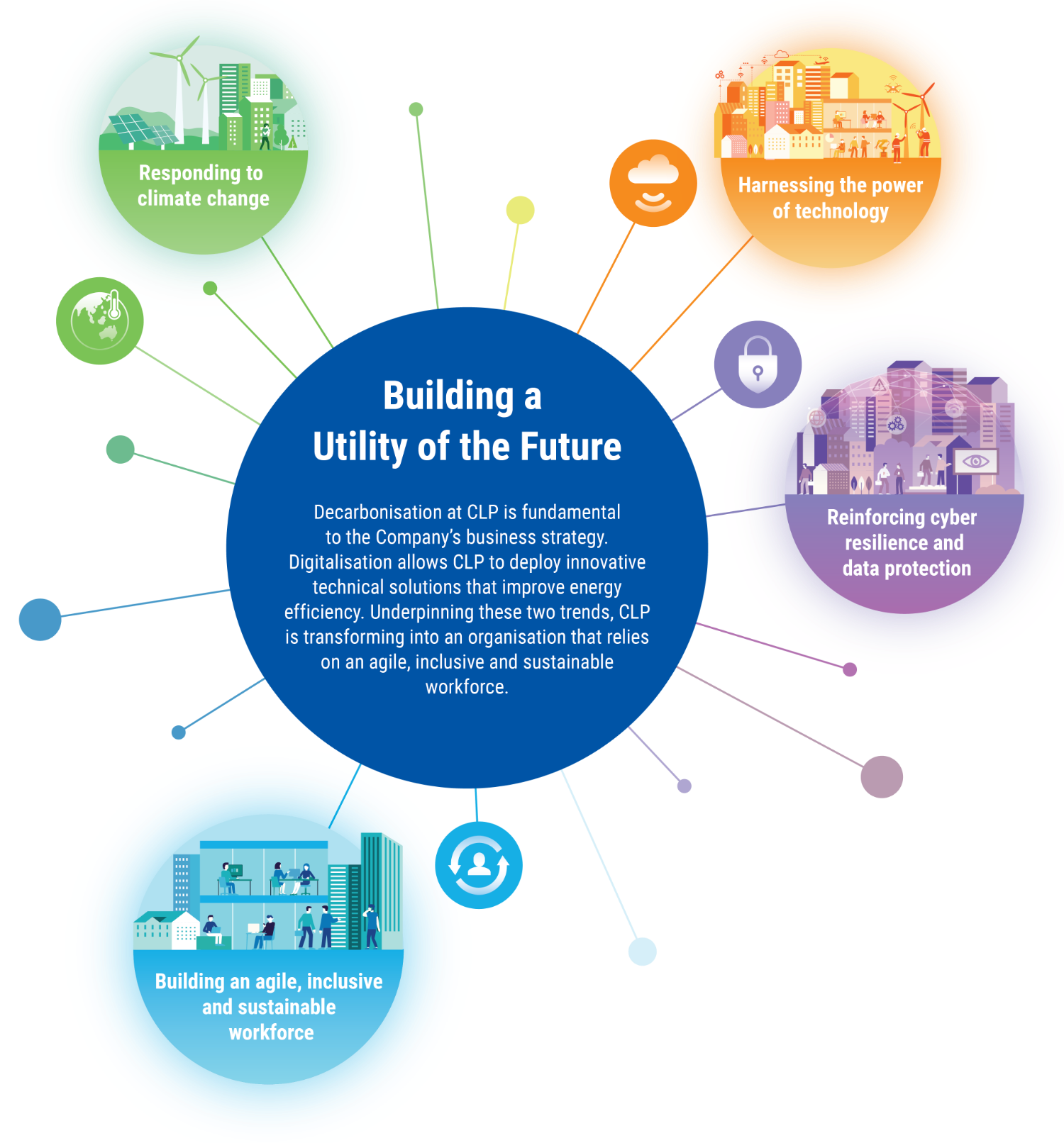
GRI reference: 102-47
The Group will no longer invest in new coal generation assets and is committed to a gradual retirement of its coal assets by 2050. This evolution creates the need to replace the revenue from coal-based generation over time. To this end, CLP will continue to actively pursue opportunities in clean energy, transmission and distribution, as well as in new energy services.
To build a Utility of the Future:
“CLP leverages new and emerging technologies to aid the progressive decarbonisation of our portfolio, empower our customers in making better energy choices, enhance performance of our operations, and to evolve and grow our business in the ongoing energy transition.”
Against a backdrop of an increasingly complex energy industry, CLP needs to be more responsive, resilient and reliable. From generations of experience, it is clear that it takes time and effort for corporations to build and maintain trusting relationships with their communities. This is reflected in CLP’s evolving approach to its home and core market Hong Kong and its three major markets – Mainland China, India and Australia.
Each market has its own variations. In Hong Kong, it is a vertically-integrated electricity supply business and serves 80% of the territory’s population. Mainland China’s investments are predominately in renewables and nuclear, with the potential for more diversified opportunities within the Greater Bay Area in the coming years. CLP India’s portfolio focuses on renewables and transmission. And EnergyAustralia is an integrated, customer-focused energy supplier.
Regardless of where the service is provided or the type of service, the Company seeks to make a contribution to society by leveraging the trust that has been built, and support and collaborate with like-minded organisations to find solutions to mutual challenges together. As part of the transition to a Utility of the Future, CLP has placed sustainability at the centre of its operations, ranging from decarbonisation, adoption of digital technology to talent attraction. As such, CLP does not have a stand-alone sustainability strategy but rather a business strategy to which sustainability is intrinsic.
Business Model
Copy linkCopied link
As a Group, CLP’s main focus is on electricity services and its business model spans from power generation, transmission and local distribution, to gas and electricity retail services supported by smart energy services.
CLP Holdings Limited is headquartered in Hong Kong, where it is listed on the Stock Exchange of Hong Kong. Hong Kong is where the largest business operates under the brand of “CLP Power Hong Kong”. There are additional business units in Mainland China, India (under the brand of “CLP India”), Southeast Asia, Taiwan and Australia (under the brand of “EnergyAustralia”).
In these diverse markets, the Group's companies play different roles depending on local circumstances and market characteristics.
Hong Kong is the only market where the Company has an integrated operation from generation, transmission & distribution to retail. Much of the business outside Hong Kong lies in the production of electricity, and all of the business units own sizable generation assets. CLP’s generation fleet has a balanced portfolio consisting of coal, gas, nuclear, wind, hydro and solar power facilities. The Group also operates flexible generation assets to manage intermittent and peak demand as well as storage solutions.
In 2019, CLP India entered into the power transmission sector. Through acquisition, as at the end of 2020, CLP India’s portfolio now includes 240 km of transmission lines.
Through the retail businesses in Hong Kong and Australia, CLP serves both commercial and residential customers. Wholesale customers include grid companies in Mainland China and electricity distribution companies and intermediaries in India, which purchase power directly from generating assets.
Electrification and digitalisation are changing the electric utilities industry. To capture the opportunities they present, the Group is also deploying various energy services such as battery storage, smart meters and other digital energy management solutions that enable system balancing and the deployment of additional renewable resources.
The complete electricity value chain goes beyond the scope of CLP’s operations. Downstream in the value chain, the distinction between an electric utility and its customers used to be clear. However, the boundary is blurring in modern electricity systems and customers are increasingly becoming “prosumers”, where commercial and residential customers alike generate electricity through rooftop solar panels and sell this electricity back to the grid, while at the same time participating in demand response programmes to maximise efficiencies.
Upstream of CLP's operations are the extractive industries that provide different fuel sources that are used to generate electricity. They also provide raw materials to manufacture the vast array of equipment and infrastructure needed by the Company to support its activities across its business model, ranging from the electricity generation infrastructure, power grids, sensors and meters, to other equipment needs that support customer services. Other key service providers include freight and logistics providers, building contractors, maintenance contractors and office support service providers.
Although CLP focuses on its own operations, it is also mindful of its impact both upstream and downstream in the value chain. CLP's value chain and the scope of its business model are outlined in the diagram below.
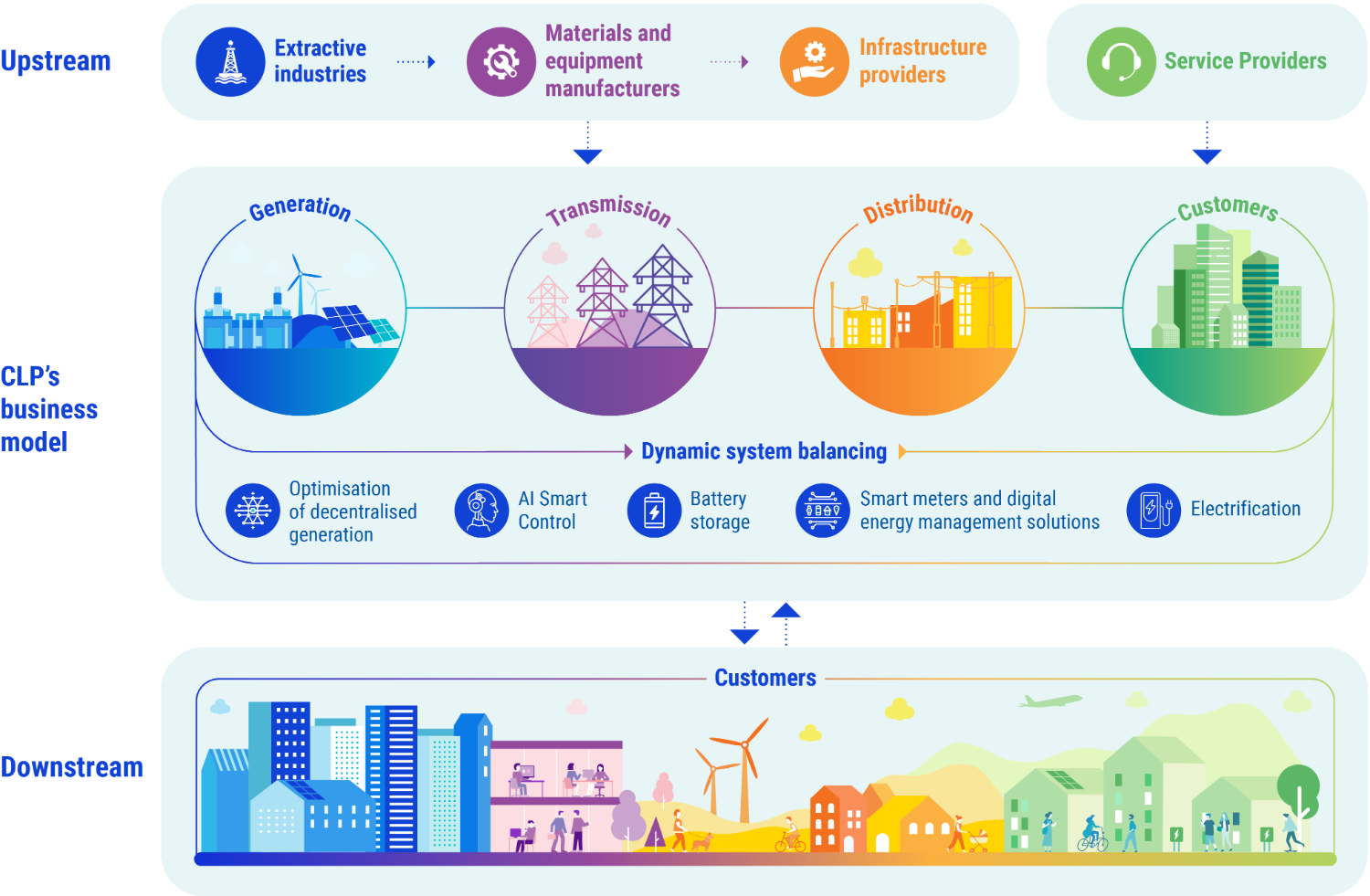 Read more on the relative importance of the material topics along the value chain
Read more on the relative importance of the material topics along the value chain Portfolio
Copy linkCopied link
As of 31 December 2020, the CLP Group companies had 8,060 full-time and part-time employees and a market capitalisation of HK$181 billion. Revenue in 2020 amounted to HK$79,590 million.
CLP’s business comprises:
Over 16,200 km of transmission and distribution lines;
Energy retail activities that serve about 5.12 million electricity and gas customer accounts;
A diversified portfolio of generation assets across five Asia-Pacific markets, using coal, gas, nuclear, wind, hydro and solar; and
In addition to generation facilities where CLP holds equity interests, the portfolio includes long-term capacity and energy purchase arrangements.
The equity generation capacity in operation and under construction across the Asia-Pacific region stood at 19,691MW as at the end of 2020, which was supplemented by an additional 5,005MW of long-term purchases.
The Group’s total electricity sent-out on an equity plus long-term capacity and energy purchase basis decreased to 85,937GWh in 2020 (from 88,573GWh in 2019). The total generation capacity increased from 19,238 MW in 2019 to 19,691MW in 2020 on an equity basis – and increased from 24,015MW to 24,696MW on an equity plus long-term capacity and energy purchase basis.
Portfolio changes
Under the Climate Vision 2050, CLP is committed to growing its investment in non-carbon emitting energy projects across the Group. In 2020, the Group continued to make significant progress: Generation from non-carbon energy sources comprised 17.5% of operating earnings (before unallocated expenses), amounting to HK$2,161 million, while capital investments (on an accrual basis) in non-carbon energy sources was 4% of total capital investment or HK$455 million.
In addition, non-generation related activity from transmission, distribution, retail and other activities delivered 47% of operating earnings, or HK$5,824 million, while capital investment in these asset types amounted to HK$4,815 million, representing 41% of total capital investment.
Listed below are the main changes in the portfolio this year:
In Hong Kong, the first new 550MW gas-fired generation unit at Black Point Power Station went into operation in early-July 2020.
In Mainland China, phase III of the Laiwu wind farm (50MW) was commissioned in September 2020, taking the total capacity of the project to 149MW. The Company has also committed to investing in phase III of the Qian'an wind project (100MW) in Jilin province.
In India, the Company has acquired two solar projects in Telangana with a combined capacity of 80MW.
In Australia, a turbine upgrade project at Mount Piper Power Station delivered an additional 30MW of generation capacity, which allows the plant to produce more energy with the same amount of coal. EnergyAustralia executed a binding long-term storage agreement with Genex Power to underpin the 250MW Kidston pumped hydro energy storage facility upon the project's financial completion and commissioning.
A map of CLP's energy assets and services is featured below.
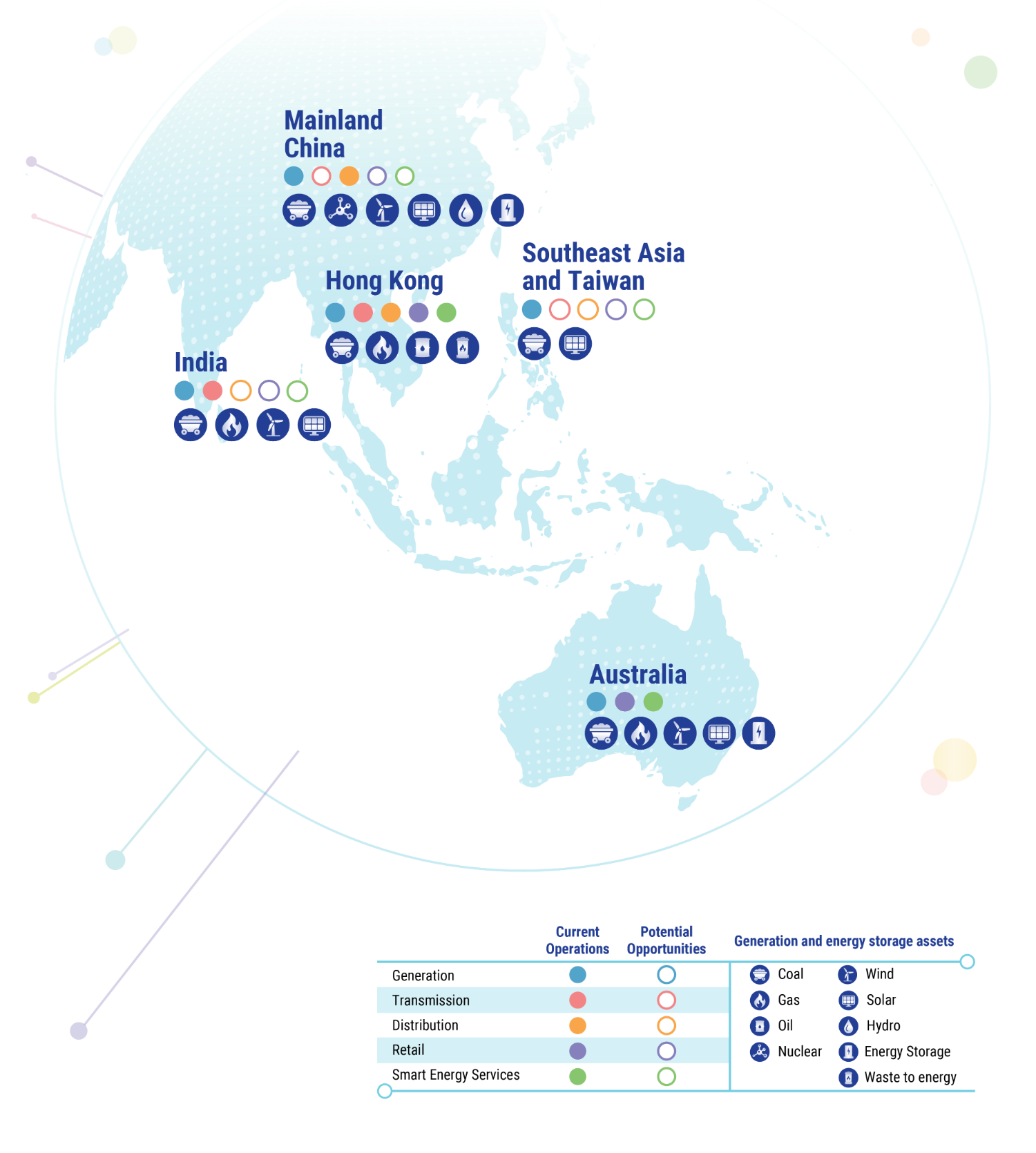 Find out more about CLP's assets and services View the list of CLP's assets in the Annual Report
Find out more about CLP's assets and services View the list of CLP's assets in the Annual Report 

